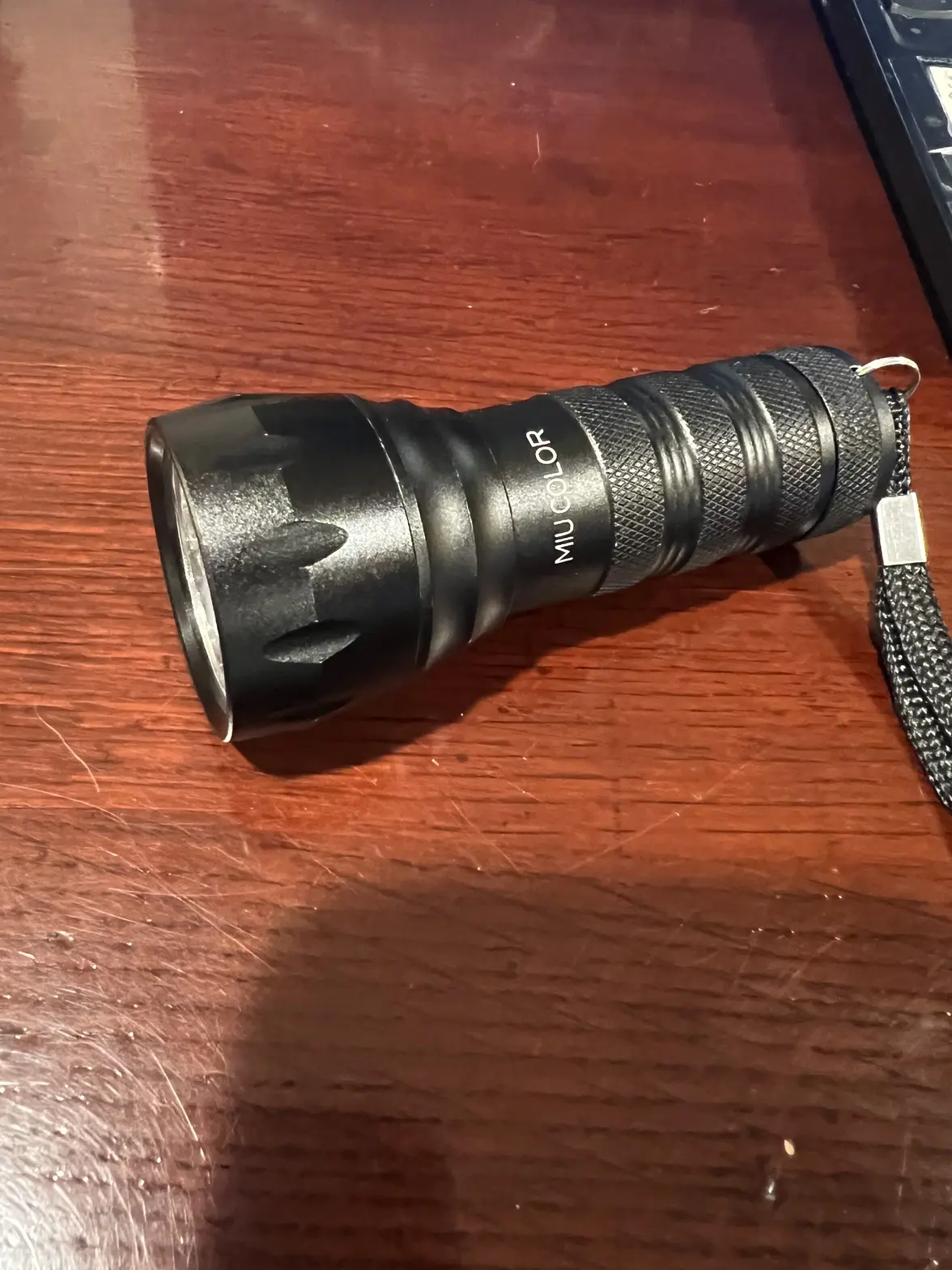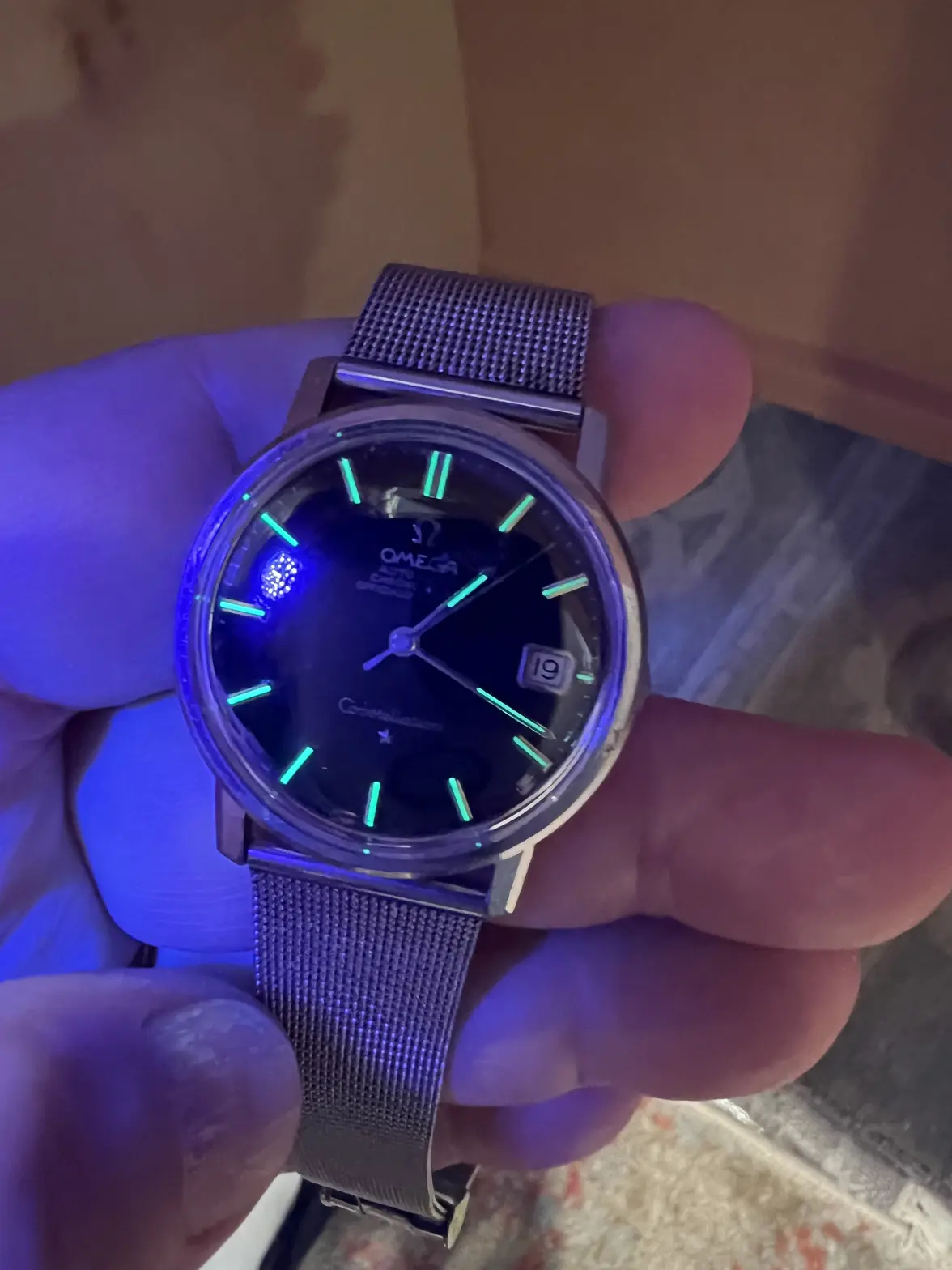- Posts
- 20
- Likes
- 5
HJR
·Hi everyone ✋🏻, first post here. I searched and found similar posts, but nothing that highlighted my exact concerns, so I felt it fair to create a new post.
Please excuse any overlap with existing threads.
I have what I believe to be either a 1962 / 1963 omega constellation that belonged to my grandfather.
I'm almost certain it's a ref. 167.005 with pure stainless steel, no date, dauphine hands, baton hour markers, note the presence of divots only at the 12, 3, 6, and 9 batons (this seems to have changed quite a bit during the 60's).
Each baton has a single lume pip at periphery, each around 0.5 mm in diameter. The hour and minute hands also each have a slim lume strip around 0.5 mm thin and approx. 3-4 mm long.
The dial has no “T” mark to indicate tritium, but I know that some of these watches during the early transition period from radium to tritium did not have it.
I’d brought the watch in to have it tested with a Geiger counter and the specialist told me he had no reading from the watch.
However...
I purchased my own pen Geiger counter and in a room where the background radiation reading was around 0.09 microsieverts / hour, I got a reading from the watch on average around 0.31 microsieverts per hour. My highest reading near the watch was 0.53 microsieverts per hour, but the 0.30's are where it seems to sit on average around the point where the crystal meets the case.
I'd assume these are on par with what I'd expect for a tritium lume, but with the small size of the lume pips, I reckon it could very well be radium. So...
Question #1. With the readings I’m getting from the watch, is the lume more likely to be radium or tritium (take into account the size of the lume pips I’d mentioned)?
I then took the watch off and was reading near 0.20 microsieverts per hour on my bare skin where the watch had been, after getting similar baseline readings from background.
I wondered why this would be, and remembered that earlier in the afternoon I'd polished the acrylic crystal with a polishing cloth and liquid compound, with focus on the areas where the crystal meets the case to buff out the scratches along the edge.
To test if somehow this was the cause, I put the Geiger counter directly on the portion of the polishing cloth that I'd used to polish the crystal, and immediately measured around 0.20 microsieverts per hour indicating that whatever material I’d polished off of the crystal was slightly radioactive. It wasn't background deviation as I'd let the counter sit on the table by itself, averaging around 0.09 - 0.14. Immediately it would shoot up to the 0.20's when in close proximity to the cloth.
Embarrassingly, I’d also smelled the crystal earlier to ensure it was not leaving a strong chemical smell on the watch. This, in addition to the frequency with which I've worn the watch over the last three months (around 5-6 days / week, around 12 hours daily), and touched my face, nose, mouth, eyes, after touching the crystal with that hand, is leaving me pretty concerned that some small amount of radioactive dust have been ingested.
Question #2. Am I putting myself at great risk by wearing this watch frequently? It seems that the crystal itself has either become so bombarded with radioactivity that it now also contains it, or that some amount of radioactive dust has nudged it's way in between the crystal and case intersection.
Question #3. Have I put myself at great risk my smelling the acrylic crystal, and by all the times I'd touched my face, etc. after touching the crystal?
Question #4. What options do I have in regards to restoring this watch (i.e. removing the radium, and applying super-luminova)? Not concerned about re-sale value, as it's a family heirloom and I have no plans to sell.
Thanks for any input. Photo attached at the bottom.
I'm relatively versed on the risks of radium, but would like to treat this as a possible exposure.
Any non-condescending and informative replies are greatly appreciated!!!
Please excuse any overlap with existing threads.
I have what I believe to be either a 1962 / 1963 omega constellation that belonged to my grandfather.
I'm almost certain it's a ref. 167.005 with pure stainless steel, no date, dauphine hands, baton hour markers, note the presence of divots only at the 12, 3, 6, and 9 batons (this seems to have changed quite a bit during the 60's).
Each baton has a single lume pip at periphery, each around 0.5 mm in diameter. The hour and minute hands also each have a slim lume strip around 0.5 mm thin and approx. 3-4 mm long.
The dial has no “T” mark to indicate tritium, but I know that some of these watches during the early transition period from radium to tritium did not have it.
I’d brought the watch in to have it tested with a Geiger counter and the specialist told me he had no reading from the watch.
However...
I purchased my own pen Geiger counter and in a room where the background radiation reading was around 0.09 microsieverts / hour, I got a reading from the watch on average around 0.31 microsieverts per hour. My highest reading near the watch was 0.53 microsieverts per hour, but the 0.30's are where it seems to sit on average around the point where the crystal meets the case.
I'd assume these are on par with what I'd expect for a tritium lume, but with the small size of the lume pips, I reckon it could very well be radium. So...
Question #1. With the readings I’m getting from the watch, is the lume more likely to be radium or tritium (take into account the size of the lume pips I’d mentioned)?
I then took the watch off and was reading near 0.20 microsieverts per hour on my bare skin where the watch had been, after getting similar baseline readings from background.
I wondered why this would be, and remembered that earlier in the afternoon I'd polished the acrylic crystal with a polishing cloth and liquid compound, with focus on the areas where the crystal meets the case to buff out the scratches along the edge.
To test if somehow this was the cause, I put the Geiger counter directly on the portion of the polishing cloth that I'd used to polish the crystal, and immediately measured around 0.20 microsieverts per hour indicating that whatever material I’d polished off of the crystal was slightly radioactive. It wasn't background deviation as I'd let the counter sit on the table by itself, averaging around 0.09 - 0.14. Immediately it would shoot up to the 0.20's when in close proximity to the cloth.
Embarrassingly, I’d also smelled the crystal earlier to ensure it was not leaving a strong chemical smell on the watch. This, in addition to the frequency with which I've worn the watch over the last three months (around 5-6 days / week, around 12 hours daily), and touched my face, nose, mouth, eyes, after touching the crystal with that hand, is leaving me pretty concerned that some small amount of radioactive dust have been ingested.
Question #2. Am I putting myself at great risk by wearing this watch frequently? It seems that the crystal itself has either become so bombarded with radioactivity that it now also contains it, or that some amount of radioactive dust has nudged it's way in between the crystal and case intersection.
Question #3. Have I put myself at great risk my smelling the acrylic crystal, and by all the times I'd touched my face, etc. after touching the crystal?
Question #4. What options do I have in regards to restoring this watch (i.e. removing the radium, and applying super-luminova)? Not concerned about re-sale value, as it's a family heirloom and I have no plans to sell.
Thanks for any input. Photo attached at the bottom.
I'm relatively versed on the risks of radium, but would like to treat this as a possible exposure.
Any non-condescending and informative replies are greatly appreciated!!!


